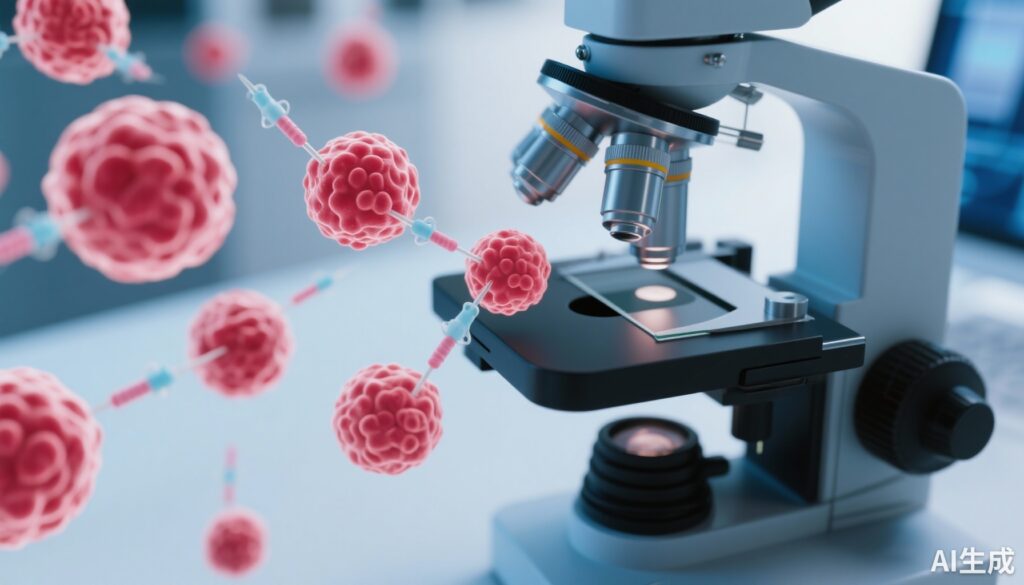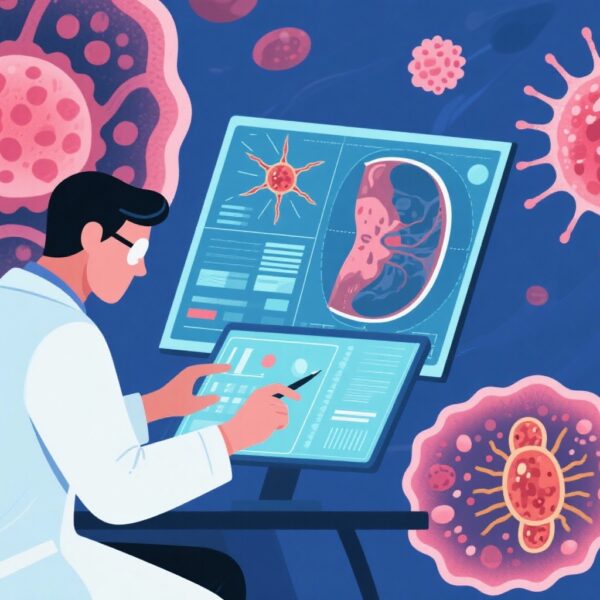Highlight
The antibody-drug conjugate Datroway (datopotamab deruxtecan), in combination with the bispecific antibody rilvegostomig, shows high objective response rates and disease control exceeding 95% in patients with advanced urothelial carcinoma, including those ineligible for cisplatin-based chemotherapy. The findings come from the Phase 2 TROPION-PanTumor03 trial and have prompted initiation of the pivotal Phase 2/3 TROPION-Urothelial03 study.
Study Background and Disease Burden
Urothelial carcinoma, primarily bladder cancer, is a common malignancy with a high unmet need in advanced stages due to limited treatment options and poor prognosis. Cisplatin-based chemotherapy has been the first-line standard for metastatic disease; however, many patients are ineligible owing to comorbidities or renal dysfunction. Although immune checkpoint inhibitors have changed treatment landscapes, response rates remain modest, necessitating novel strategies to improve outcomes.
Antibody-drug conjugates (ADCs) represent an innovative approach to deliver cytotoxic agents specifically to tumor cells by targeting tumor-associated antigens, potentially improving efficacy and reducing systemic toxicity. Datroway is an ADC comprising a humanized monoclonal antibody targeting the cell surface glycoprotein Trop2, conjugated to a novel DNA topoisomerase I inhibitor payload (DXd) via a cleavable linker. Rilvegostomig is a dual checkpoint inhibitor bispecific antibody targeting PD-1 and TIGIT, both pivotal in tumor immune evasion.
Study Design
The open-label, multicohort, Phase 2 TROPION-PanTumor03 trial evaluated the efficacy and safety of Datroway plus rilvegostomig in locally advanced or metastatic urothelial carcinoma patients across first-line (cisplatin-ineligible) and second-line (post-platinum therapy without prior immunotherapy) settings.
Two key patient cohorts were assessed: (1) first-line cisplatin-ineligible patients (n=22), and (2) second-line patients who had received platinum-containing chemotherapy but were immunotherapy-naive (n=18). Primary endpoints included objective response rate (ORR) and disease control rate (DCR). Secondary endpoints included progression-free survival (PFS), duration of response (DoR), and safety.
Key Findings
In the first-line cisplatin-ineligible cohort, the combination therapy elicited an ORR of 68.2% (95% confidence interval [CI]: 45.1–86.1), with a remarkable DCR of 95.5% (80% CI: 83.4–99.5). The median PFS was not reached at data cutoff, and the estimated 12-month PFS rate was 73.5% (95% CI: 46.5–88.4), indicating durable disease control.
In the second-line post-platinum, immunotherapy-naive cohort, the ORR was 38.9% (95% CI: 17.3–64.3) with a DCR of 83.3% (80% CI: 66.6–93.7). Median PFS was 12.5 months (95% CI: 4.2–not reached), with a 12-month PFS rate of 60.0% (95% CI: 33.7–78.7). Median duration of response in both cohorts was not reached, suggesting sustained responses.
Adverse event data, while not detailed in the preliminary results, is being closely monitored in ongoing studies to characterize the safety profile of this combination.
Expert Commentary
The use of an ADC targeting Trop2 combined with dual checkpoint inhibition via PD-1 and TIGIT blockade represents a rational and promising approach to enhance antitumor activity in urothelial carcinoma. Trop2 is highly expressed in urothelial tumors, providing tumor-selective delivery of the cytotoxic payload, while PD-1/TIGIT inhibition releases immune suppression to potentiate T cell–mediated tumor eradication.
The high disease control rate above 95% in the first-line cisplatin-ineligible population is particularly noteworthy given the historically limited options in this cohort. Similarly, the durable responses observed in the second-line setting support the combination’s potential to improve outcomes beyond existing therapies.
Limitations include relatively small sample sizes and the absence of randomized comparator arms at this stage. Ongoing Phase 2/3 studies such as TROPION-Urothelial03 will provide robust data on efficacy and safety compared to standard chemotherapy regimens, clarifying the clinical utility of this regimen.
Conclusion
Datroway plus rilvegostomig combination therapy demonstrates impressive efficacy with high response and disease control rates in advanced urothelial carcinoma, addressing an important unmet need for patients unsuitable for platinum therapy or who have progressed on prior treatments. These Phase 2 findings have justified progression to pivotal trials and may herald a novel, effective frontline and second-line therapeutic approach integrating ADCs with immune checkpoint dual blockade.
Future efforts should focus on long-term safety monitoring, biomarker identification for response prediction, and combination strategies to further enhance durable remission rates in this challenging disease.
Funding and Clinical Trials
This research is sponsored by AstraZeneca and Daiichi Sankyo. The pivotal Phase 2/3 TROPION-Urothelial03 trial is ongoing to further evaluate this regimen.
References
- DATROWAY® Plus Rilvegostomig Showed Promising Tumor Responses in Patients with Metastatic Urothelial Cancer in TROPION-PanTumor03 Phase 2 Trial. BusinessWire. October 17, 2025. https://www.businesswire.com/news/home/20251016311488/en/DATROWAY-Plus-Rilvegostomig-Showed-Promising-Tumor-Responses-in-Patients-with-Metastatic-Urothelial-Cancer-in-TROPION-PanTumor03-Phase-2-Trial



